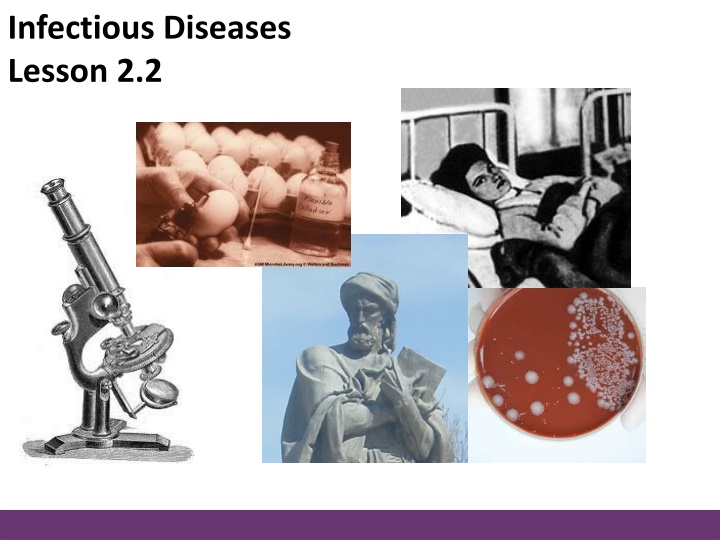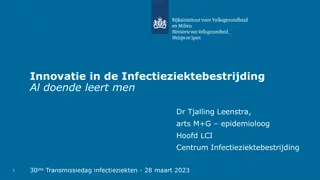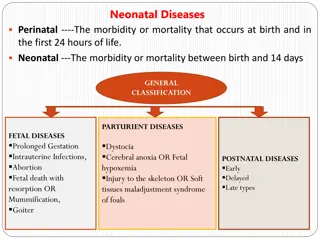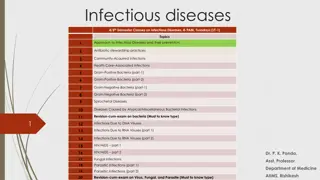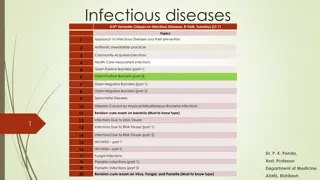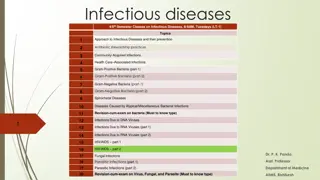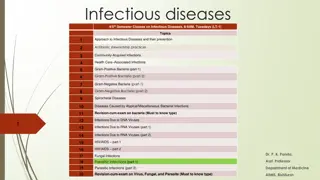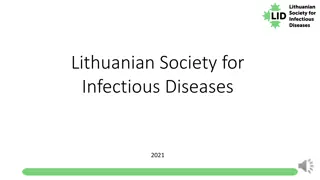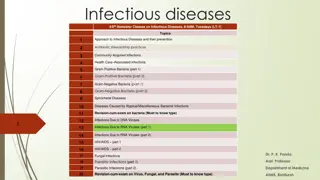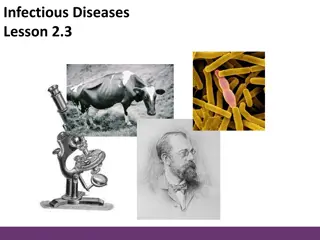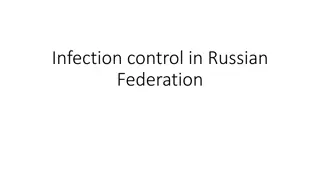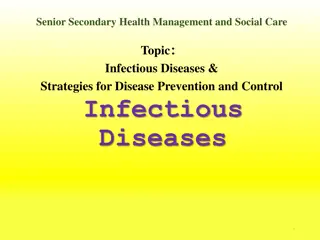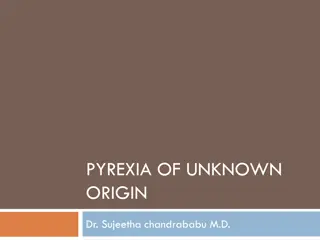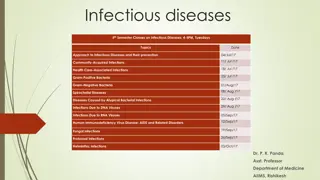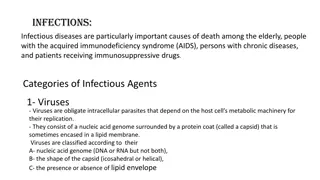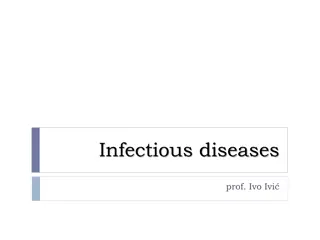Infectious Diseases: Causes, Discoveries, and Impact
Explore the history and discovery of infectious diseases through lessons on the origins of microbes, the impact of cholera outbreaks, and the pioneering work of scientists like Antonie van Leeuwenhoek and Louis Pasteur. Understand how viruses were identified despite being smaller than bacteria and learn about key experiments that revolutionized our understanding of disease transmission.
Download Presentation

Please find below an Image/Link to download the presentation.
The content on the website is provided AS IS for your information and personal use only. It may not be sold, licensed, or shared on other websites without obtaining consent from the author.If you encounter any issues during the download, it is possible that the publisher has removed the file from their server.
You are allowed to download the files provided on this website for personal or commercial use, subject to the condition that they are used lawfully. All files are the property of their respective owners.
The content on the website is provided AS IS for your information and personal use only. It may not be sold, licensed, or shared on other websites without obtaining consent from the author.
E N D
Presentation Transcript
Infectious Diseases Lesson 2.2
Lesson Objectives: After finishing today s lesson you will be able to: explain why it was hard to identify the source of an infectious disease before people knew they were caused by microbes. explain where microbes come from. describe why viruses can pass through bacterial filters.
Do Now Where do infectious microbes come from? - Miasma - before we could see microbes people believed diseases were caused by pollution or a noxious form of "bad air". - Germ Theory - today we know microbes arise form microbes.
Ghost Map Activity A cholera outbreak in Soho, London in 1854 had grave impacts on the community. Use the ghost map reading in the worksheet to try to identify the source.
Discussion- The discovery of microbes van Leeuwenhoek Antonie van Leeuwenhoek Drawings of dog and rabbit sperm
Looking at microbes van Leeuwenhoek First to see them: Antonie van Leeuwenhoek Drawings of dog and rabbit sperm
Where did microbes come from? Lazzaro Spallazani: Microbes could not grow spontaneously in sterile broth! Pasteur did the key experiment gases only air (gases, dust, microbes) dust + microbes sterile broth Pasteur let the light gases in the air into the broth but kept the heavy dust with the microbes stuck in the neck called the Swan s neck. The result: no growth!
How did scientists discover agents that were smaller than bacteria? A small problem of viruses: too small to be seen under a light microscope. Mixture of Bacteria and Viruses Filter with pores Filtration Tobacco mosaic virus Bacteria are too big and get stuck in the filter. Viruses are smaller than the pores and go through easily. Dimitri Ivanovski
Wrap Up If you think a disease is caused by an infectious agent, how would you find the microbe? Where would you look?
Homework Look up one example of an extreme environment that bacteria grow in. Write one paragraph about the environment and the bacterium. Don t forget to cite your sources.
